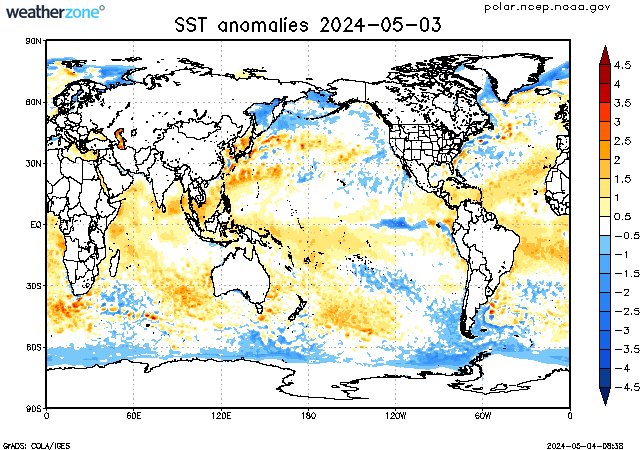- WEATHER
Australia
- National
- New South Wales
- Victoria
- Queensland
- Western Australia
- South Australia
- Tasmania
- ACT
- Northern Territory
Long Range Forecasts
- WARNINGS
- RADAR
- SATELLITE
- MAPS & CHARTS
- LONG RANGE
Long Range Forecasts
- CLIMATE
Climate Indicators
- NEWS
Global Sea Surface Temperature Anomalies
The sea surface temperature anomaly (SSTA) is the difference between the observed SST and the climatological SST. These anomalies are calculated on a weekly basis.
Positive SSTAs are usually correlated with increased regions of convection (cloudiness and rainfall) while negative SSTAs are usually correlated to reduced convection.
SSTAs can be used as an indicator of the phase of global climate fluctuations, such as the El Nino/Southern Oscillation (ENSO).
The data displayed in this map is the weekly average, centred on the date shown.
Enter a postcode or town name for local weather, or text to search the site. » advanced search
Wet start to the Olympics... will the rain continue?
14:05 AEST The Paris 2024 Summer Olympics opening ceremony was quite the unique spectacle.
- 16:04 AEST Snowy weekend ahead in the mountains
- 13:42 AEST Perth's first wetter-than-average month in more than a year
- 13:13 AEST Prolonged cold outbreak for southeastern Australia
- 14:03 AEST A stormy taste of spring for NSW and Qld

